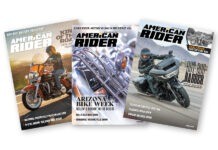A word about Light Emitting Diodes and their application to headlights: I want ’em! OK; that’s a sentence, but the fact remains, when it comes to night vision at freeway speeds there just isn’t anything better. The virtues of L.E.D. forward lighting are legion. They last about 1,000 times longer than regular lights, they are brighter and whiter while drawing a fraction of the current required by filament lamps and the beam patterns are sharper with far less “scatter”… especially on low beam. In spite of all that good news, one should not be surprised to find that they are not perfect. Not hardly!

First, there’s the little-known fact that L.E.D headlights have issues with extreme ambient temperatures. Meaning, they might not be so bright on really hot or cold days. Then there’s that pesky fable that they don’t run hot like, say, a halogen or HID headlight. While it’s true enough that you can lay your hand on the lens of a lit L.E.D. headlight and be quite surprised to find it’s cool to the touch, the backside isn’t so lucky. In fact, the heat in the area where the L.E.D.s are “potted” is high enough to require the inclusion of a finned heat sink behind the parabola! There’s also the design of the things, or more accurately, the pace and variation of design. Some L.E.D. headlights employ a lot of L.E.D.s in individual little reflectors, some are quite similar to existing incandescent lamps with large mirrored and/or faceted parabolic reflectors using only a couple of L.E.D.s with a familiar “high/low” positioning for the two-beam patterns, and the latest design is a modified and refined version of the so-called “projector” type, which has a few L.E.D.s arranged in arrays of tightly focused… ah… “sub”-lamp grouping, which neither need nor use a conventional parabolic reflector; they just shoot light out front without bouncing it around inside the headlamp at all. It can be confusing as hell since each one to us “lay persons” seems to do a great job of making our old-fashioned H4 headlights (let alone the Tungsten stuff from 25 years back) look dim and watery, by comparison. Yet, it’s really the rate of design improvements, since “white” L.E.D.s were perfected to the point of commercial viability some six or seven years ago that makes it tough, because the next breakthrough might well make the types we have today obsolete. Last but not least, in fact for me and many like me it’s the biggest problem of all—there’s the insanely high price of the damn things! Mind you, L.E.D. headlamps are worth what they cost, and remain proof that you get what you pay for, but even then there are pricing tiers that bring tears to my eyes! If you wait, you might well see prices drop, but (A) I doubt it and (B) in the meantime you’re sort of banging around in the dark.

Folks who ride a lot after the sun sets and believe particularly in the distinct advantages of both seeing and being seen should budget for this kind of upgrade immediately. I’m not talking about cosmetic upgrading of turn signals or taillights here… although both of those are eminently worthwhile, too. I’m talking about an investment in saving your hide! Believe me, I’m not trying to sell anything here, except maybe the idea that L.E.D. headlights are a huge advance and advantage, and that most other options are neither. But for that statement to make sense, we need to deal with a few myths and misconceptions about the forward lighting we’ve known until now.
Bulbs—Brightness—Bother
We’re used to thinking about brightness in terms of watts, like the difference between a 40-watt and a 100-watt bulb in the kitchen light. That’s all wrong for a couple of reasons. First, we are dealing with headlamps and focused light, not the diffused light of other sources, so it’s not that simple. Also, any rating in watts is really a measure of the amount of power required by the bulb, not its actual output. Light output is measured in many confounding ways, too… like the archaic “candlepower” or the more familiar “lumens.” But, regardless of the term used, the issue is how much of the light generated by the bulb is useful to us in illuminating the road ahead. That and, apparently, the so-called “color temperature” of the light emitted. So, for the record, daylight white is the “color” we humans see by best. Lots of charts and graphs will rank this stuff on what’s called the Kelvin scale, yet differences prevail there, too; some say daylight white is 5000K (Kelvin) while some say as high as 6500K is required to achieve the effect. The point to be considered here is that the bulb must do it naturally for it to count. In other words, a halogen bulb (any halogen bulb) which glows at, say, the typical yellowish 3500K might well appear whiter to our eye when tinted blue… but it will not make your headlight better because it diminishes the distance the light is thrown down the road. In fact, in rainy or foggy conditions these “super white” bulbs are actually dangerous, because the blue tint cuts our eyes’ ability to see yellows and browns. Put another way, dropping white food coloring in water doesn’t make it milk—no matter how you look at it. No amount of tinting makes a clear bulb work better to see by, either… only to be seen!
That’s where this kind of marketing hype can be deceiving. If you want to increase the amount of useful forward lighting in your halogen headlamp, you must increase the power (wattage) of the bulb, not change its color… period! Of course the safety mavens tell you never to do this because of the increased heat a higher wattage bulb brings to the party. There is truth in this—yet it’s not the whole story. For one thing, the extra wattage is mostly needed on moonless nights, at speed, in the middle of nowhere… meaning high beam. Low beam can generally remain at the standard 55 watts for any usage that’s even close to normal. So, seems to me, one could invest in a clear H4 bulb with a 50-watt low beam and an 80–100 watt high beam, throw away the stock socket for the thing, install a non-melting ceramic socket (readily available from Amazon or eBay) and find true happiness during those rare occasions when you really need the brief use of a high-powered high beam. As long as your headlamp shell has air space to dissipate heat, you’ll see a long ways down the road. In city traffic, you’ll also be able to get the dolt in the Volvo to recognize your existence with a quick flash or two.

Upon reflection
But no matter how they are rated or how powerful they really are, bulbs are only half of the story. The other half (and then some, really) is the lamp. Most of us remember when tungsten sealed beams were not just ubiquitous, but the law of the land. DOT in all its wisdom was virtually the last in the civilized world to let us have something better than a simple parabolic mirrored reflector to bounce light from the filament forward and a fluted glass lens to focus that dim yellow light… hopefully where it would be useful for forward vision at night. (Fact was—you could easily overdrive low beam on those things at a measly 50–60 mph!) Sometime around 1983 Ford (thank you!) had a better idea and finally succeeded in getting the bureaucrats to let them try it. Among other things, that lead to the rapid switch from what we had to clear, non-fluted (and often plastic) lenses with computer-engineered facets in the reflector and … wait for it… replaceable Halogen bulbs! YEE-HAH! That brief span of a decade or two led to the ongoing development of Halogen headlights in general and the introduction of the High Intensity Discharge headlamp, as well as reflector shapes and designs we never could have imagined. HID headlamps do not use a filament of any kind at all, instead using an arc of light between two poles to produce both brighter and whiter results. Therefore, they were the best option for a decade as a properly constructed system.
HID “conversion kits,” on the other hand, are almost as useless as those blue-tinted bulbs since they overpower a reflector designed for halogen bulbs, resulting in tons of scattered light and glare… rather than true improvements in forward visibility. (Once again, kinda impressive to be seen, but not to see by.) Reflector design has gotten extremely sophisticated in automobile applications as you can plainly see by looking at the elaborate shapes, as well as the fact that cars have, by and large, moved beyond reflectors altogether and are more and more the “projector” type. For once, this concept works about like it sounds, without a reflector of the type we’ve known since the days of the lighthouse and more like an efficiently focusing lens of the type first promulgated by Fresnel almost as long ago. The light produced by the bulb or diode isn’t so much bounced off a reflector and focused through a lens, as it is shot out of an optic cannon—straight, bright and in a well-defined pattern of forward illumination—with minimal glare or scatter compared to previous technologies. As far as I’m concerned, the fundamentally superior light source provided by L.E.D.s combined with the notable advantages of projector-type beam patterns, for both distance (quarter mile-plus high beam) and the critical function of a well-defined “rectangle” of light (about 400 feet out) on low beam, is a very illuminating prospect.
**Have a question for Kip? Post it in the comment section below and it just may also end up in the printed version of our letters to the editor section, “and then THEY said…”.


















